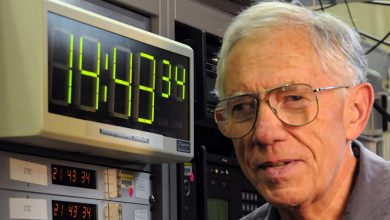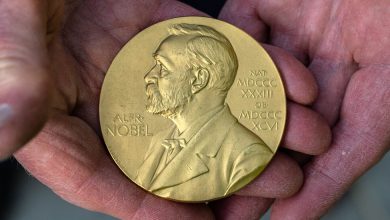U.S. and Russian Astronauts Land on Earth Together Amid War in Ukraine

Mark Vande Hei, a NASA astronaut, returned to Earth on Wednesday with two Russian counterparts, landing in Kazakhstan after he spent 355 days in space.
Mr. Vande Hei and his Russian crewmates, Anton Shkaplerov and Pyotr Dubrov, flew home together in a Russian spacecraft, guided by Russian flight controllers. At the landing site, Mr. Vande Hei was met by a contingent of NASA and Russian personnel, a close collaboration between the two space agencies that has continued despite Russia’s deadly invasion of Ukraine and the tensions it has caused between Moscow and the West.
The three men returned to a world where cooperation between Russia and the United States to preserve the future of the International Space Station can no longer be taken for granted.
The space station was meant to be a marvel of peaceful post-Cold War amity between Moscow and Washington, drawing Russia into the community of international collaboration and preventing Russian rocket engineers from selling expertise to countries like North Korea seeking to build better missiles.
In an interview on NASA Television last week, Mr. Vande Hei referred indirectly to the war in Ukraine while discussing the legacy of cooperation in orbit.
“This is a very challenging time for international relations,” Mr. Vande Hei said. “My hope is that in our attempt to further and find peace throughout the world, that these type of connections that we have can be maintained and serve as a path forward.”
But in the past month, Russia has faced withering sanctions, condemnation and growing isolation from Western nations. President Biden harshly condemned President Vladimir V. Putin for the invasion.
NASA has tried to stay above the fray for the past month with minimal statements saying that operations on the space station are unaffected. But the ongoing military conflict could test its ability to continue working with Roscosmos, the state corporation that runs Russia’s space activities.
Now on the ground, Mr. Vande Hei is being greeted by NASA flight doctors, public affairs officials and representatives from the astronaut’s office and the space station management. Gary Jordan, a NASA spokesman, said that there should be no deviation from the typical process for receiving American astronauts returning on Russia’s Soyuz spacecraft.
After initial medical checks, the astronauts rest for a while in tents before traveling by helicopter to the airport, where Mr. Vande Hei and his NASA colleagues will get on a Gulfstream jet and take off. About 24 hours after landing in Kazakhstan, Mr. Vande Hei will be back in Houston.
While NASA and Roscomos appear to have worked together Wednesday to bring their crew back from orbit, their cooperation was preceded in recent weeks by tense outbursts.
Dmitry Rogozin, who leads the Russian space program, has made bellicose statements on social media. He shared a video that suggested the Russians might leave Mr. Vande Hei behind. NASA officials have carefully sidestepped what Mr. Rogozin has said and insisted that nothing has changed.
“For the safety of our astronauts, the working relationship between NASA and our international partners continues,” Bill Nelson, the NASA administrator, said during his State of NASA speech on Monday. “And that includes the professional relationship between the cosmonauts and our astronauts.”
While NASA remains mum, Scott Kelly, a retired astronaut who held the record for consecutive days in space by an American until Mr. Vande Hei passed it recently, feuded publicly this month with Mr. Rogozin. He stopped at NASA’s request.
At the same time, Russian and European cooperation has all but collapsed since the Russian invasion of Ukraine. The European Space Agency postponed a rover mission to Mars because it relied on a Russian rocket. And a British satellite internet company, OneWeb, canceled a series of launches that used Russia’s Soyuz rockets, shifting some of them to SpaceX rockets. Russia also said it would cease cooperative science experiments with Germany conducted on the Russian part of the space station. A German astronaut, Matthias Maurer, is currently a member of the crew.
Orbital construction of the International Space Station began in 1998 with the launch of the module Zarya. Financed by NASA and built by Russia, it is actually part of the NASA-led half of the space station reflecting American foreign policy at the time, which sought to sustain Russia’s space program during the economic tumult after the collapse of the Soviet Union. Russian and American astronauts permanently moved into the fledging space station on Nov. 2, 2000, and the outpost has been crewed and cooperatively managed by the United States and Russia ever since, with assistance from European, Japanese and other international partners.





